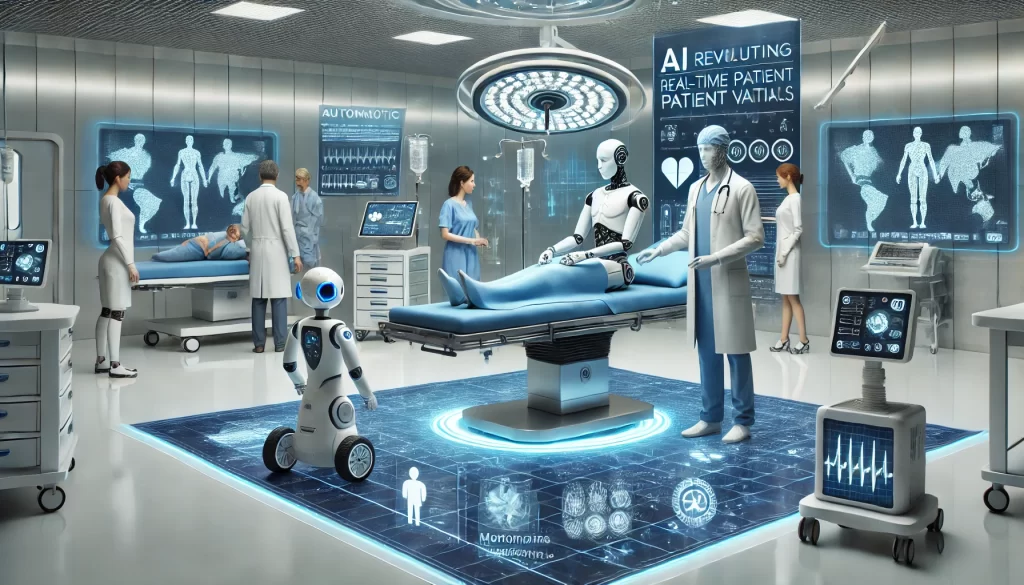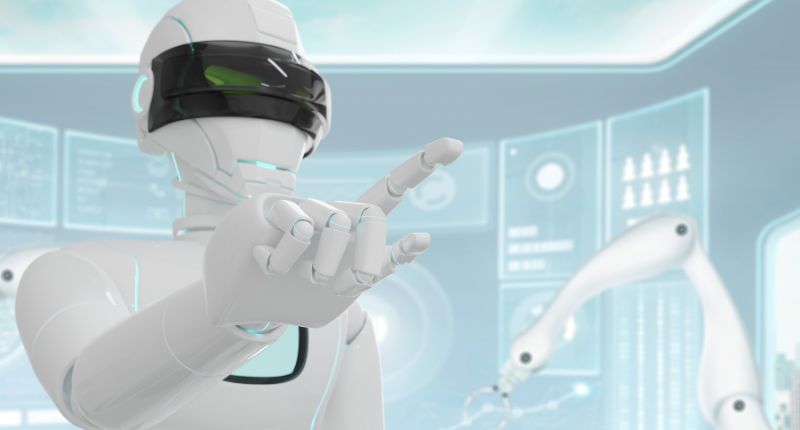Imagine a world where diseases are diagnosed before symptoms appear, where personalized treatment plans are crafted in minutes, and where life-saving drugs are developed in months instead of years. This isn’t science fiction—it’s the reality being shaped by artificial intelligence (AI) in healthcare today.
AI is transforming every corner of the medical field, from early disease detection to streamlining administrative tasks. But how exactly is this technology rewriting the rules of healthcare? In this comprehensive guide, we’ll explore the groundbreaking ways AI is enhancing patient care, reducing costs, and empowering medical professionals. Whether you’re a healthcare provider, patient, or tech enthusiast, this deep dive will reveal why AI is the game-changer modern medicine has been waiting for.
1. Early Diagnosis and Precision Medicine
The Power of Predictive Analytics
One of AI’s most profound impacts lies in its ability to detect diseases at their earliest stages. Traditional diagnostic methods often rely on visible symptoms or time-consuming lab tests, but AI algorithms can analyze vast datasets—from genetic information to imaging scans—to identify patterns invisible to the human eye.
- Cancer Detection: Tools like Google’s DeepMind have demonstrated 94% accuracy in detecting breast cancer from mammograms, outperforming human radiologists. AI systems trained on millions of medical images can spot tumors, lesions, or anomalies in seconds.
- Chronic Disease Management: For conditions like diabetes or heart disease, AI-powered wearables (e.g., smartwatches) monitor real-time data (blood sugar levels, heart rate) and alert users and doctors to potential risks before emergencies arise.
Personalized Treatment Plans
No two patients are alike, and AI is making “one-size-fits-all” treatments obsolete. Machine learning models analyze a patient’s genetics, lifestyle, and medical history to predict how they’ll respond to specific therapies.
- Oncology: IBM Watson for Oncology uses AI to recommend personalized cancer treatments by cross-referencing a patient’s data with thousands of clinical trials and medical journals.
- Mental Health: Apps like Woebot leverage natural language processing (NLP) to provide cognitive behavioral therapy tailored to individual users’ emotional states.
2. Accelerating Drug Discovery and Development
From Lab to Market in Record Time
Developing a new drug traditionally takes 10-15 years and costs billions. AI is slashing both timelines and expenses by automating labor-intensive processes:
- Target Identification: Algorithms analyze biological data to pinpoint molecules or proteins that could combat diseases. For example, during the COVID-19 pandemic, AI identified existing drugs like Baricitinib as potential treatments in weeks.
- Clinical Trials: AI optimizes trial design by selecting ideal candidates based on genetic markers, reducing failure rates. Companies like Insilico Medicine have used AI to design and synthesize novel drug candidates in under 18 months.
Repurposing Existing Drugs
AI platforms like BenevolentAI scan databases of approved drugs to find new applications. This approach saved critical time during the Ebola outbreak when AI suggested Remdesivir—originally developed for hepatitis—as a viable treatment.
3. Enhancing Administrative Efficiency
Reducing Burnout with Automation
Healthcare workers spend up to 70% of their time on administrative tasks. AI is alleviating this burden through:
- Voice-to-Text Transcription: Tools like Nuance’s Dragon Medical One convert doctor-patient conversations into structured EHR (Electronic Health Record) notes, saving hours of charting.
- Prior Authorization: AI automates insurance approvals by instantly verifying coverage criteria, cutting processing times from days to minutes.
Smart Scheduling and Resource Allocation
Hospitals use AI to predict patient admission rates, optimize staff schedules, and manage inventory. During flu season, predictive models help allocate vaccines and ICU beds efficiently, preventing overcrowding.
4. Remote Patient Monitoring and Telemedicine
24/7 Care Beyond Hospital Walls
The rise of telehealth has been supercharged by AI, enabling continuous care for patients in rural areas or those with mobility challenges:
- Wearable Devices: AI-powered wearables (e.g., Apple Watch’s ECG feature) detect irregular heart rhythms and alert users to seek care, reducing stroke risks.
- Virtual Nurses: Platforms like Sensely use AI avatars to check on post-surgery patients, answer questions, and remind them to take medications.
Managing Chronic Conditions at Home
For diseases like COPD or hypertension, AI analyzes data from home sensors to predict flare-ups. Cleveland Clinic’s AI model, for instance, predicts heart failure 7-10 days in advance with 85% accuracy.
5. Ethical Considerations and Challenges
Navigating Privacy and Bias
While AI offers immense promise, it also raises critical ethical questions:
- Data Security: Protecting sensitive patient data from breaches is paramount. Federated learning, where AI models train on decentralized data, helps preserve privacy.
- Algorithmic Bias: If AI systems are trained on non-diverse datasets, they may overlook minority populations. MIT researchers found that some chest X-ray algorithms performed poorly on Black patients due to underrepresentation in training data.
Regulatory Hurdles
Governments are racing to establish frameworks for AI in healthcare. The FDA’s Digital Health Precertification Program aims to fast-track AI tools while ensuring safety, but global standards remain fragmented.
6. The Future of AI in Healthcare
AI and Genomics: The Next Frontier
CRISPR gene-editing technology combined with AI could unlock cures for genetic disorders. Companies like Deep Genomics use AI to predict how DNA mutations cause disease and design corrective therapies.
Mental Health Breakthroughs
AI chatbots are becoming frontline tools for mental health support. Stanford’s Woebot, for example, has shown to reduce depression and anxiety symptoms in clinical trials by offering instant, judgment-free support.
Surgical Robots and Augmented Reality
Robotic systems like the da Vinci Surgical System already assist surgeons, but future AI integrations could enable autonomous procedures. Meanwhile, AR headsets powered by AI overlay critical patient data (e.g., blood vessel maps) during operations.
Conclusion: Embracing the AI-Driven Healthcare Revolution
AI isn’t here to replace doctors—it’s here to amplify their expertise. By automating mundane tasks, uncovering hidden insights, and enabling proactive care, AI empowers healthcare professionals to focus on what matters most: their patients.
However, success hinges on collaboration. Developers, clinicians, and policymakers must work together to address ethical concerns, ensure equitable access, and build trust in these technologies. As AI continues to evolve, one thing is clear: the future of healthcare is smarter, faster, and more human-centered than ever before.


